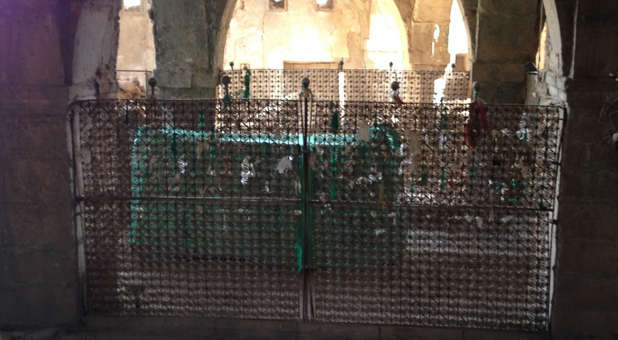ISIS Threatening Tomb of Jewish Prophet Nahum in Iraq
The Islamic State terror group’s offensive in Iraq is now threatening to take the northern Iraqi village of Al Qosh, which is home to an ancient Jewish synagogue that contains the tomb of the Prophet Nahum the Elkoshite.
The 2,600-year-old site lies just 10 miles from the regional frontline of Islamic State, which has been battling the Western-backed Kurdish Peshmerga forces for control of the area.
Nahum is a minor prophet in the Hebrew Bible who prophesied the end of the Assyrian Empire and its capital city of Nineveh in the 7th century BCE. Little is known about the prophet’s personal life, but “the Elkoshite” may have referenced the town he was from, which some associate with modern-day Al Qosh, where his tomb lies.
The tomb’s site used to be home to a small Jewish community and drew thousands of Jewish pilgrims each year. But after the expulsion of the Jewish community of Al Qosh in the early 1950s, the tomb has been watched over by an Assyrian Christian family while some attempts have been made to restore the crumbling site.
“When the last Jewish people in Al Qosh left, they asked my grandfather to watch over the tomb, to keep it safe. I don’t know much more than that,” Asir Salaam Shajaa, an Assyrian Christian born in Al Qosh, told Haaretz. “Nahum is not our prophet, but he is a prophet, so we must respect that. He’s a prophet, it is simple.”
Islamic State has destroyed numerous irreplaceable ancient artifacts belonging to the Assyrian people in northern Iraq, calling the artifacts false idols. The terror group released a video earlier this year showing its fighters smashing artifices at the ancient Assyrian city of Nimrod before blowing up the site. The terror group has also sold off numerous artifacts on the black market to fund its operations.
Last month, Islamic State conquered the ancient Syrian town of Palmyra, home to some of the most magnificent Roman ruins in the Middle East. Many fear that the terror group will also loot and destroy Palmyra.
For the original article, visit jns.org.
















































